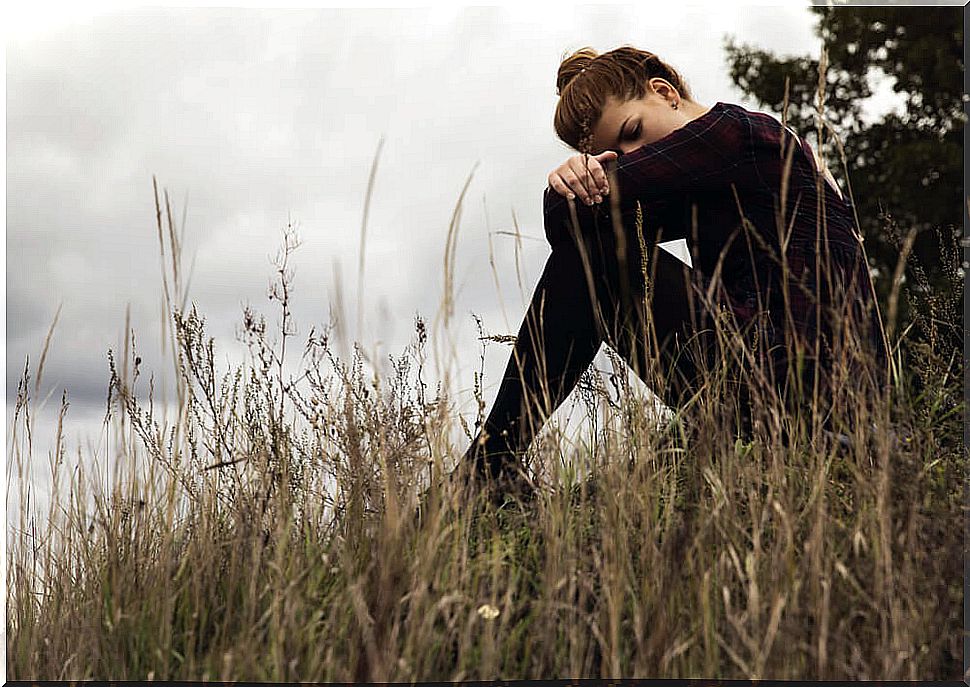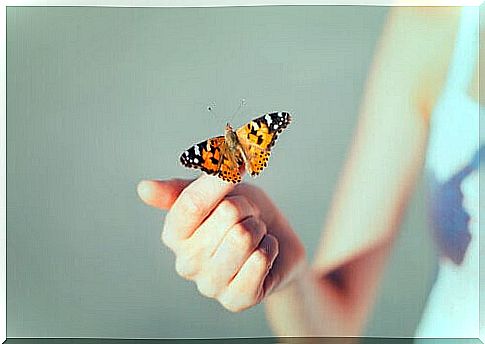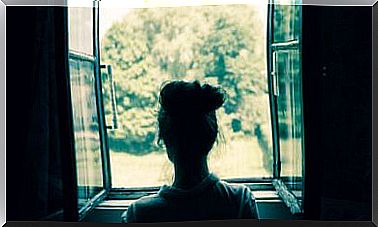Creative Despair: The Light That We Must See Beyond Discomfort

Creative despair reminds us that sooner or later we have to do it: stop, face suffering and our resistance. Far from feeding this repertoire of avoidance strategies, this technique invites us to accept reality assuming hopelessness in order to travel with it, but at the same time creating a new route plan, a new brighter purpose where there is hope.
This psychotherapeutic tool is part of acceptance and commitment therapy. For readers who do not know this approach, we could say that it is part of the so-called third generation therapies.
It usually generates positive and transformative changes in people thanks to two very specific keys. In the first place, they fight automatic thoughts, those that cause us suffering and often plunge us into destructive dynamics with which we feed pain. Second, Acceptance and Commitment therapy is characterized by that direct, human and enveloping closeness with the patient where, through a fluid and comfortable dialogue, free of judgment, changes are generated and also fostering more adaptive behaviors.
Thus, and when promoting such changes, it is common to make use of what is known as creative hopelessness, which can bring the patient closer to the reencounter of their own values, to achieve a state of calm and internal harmony where they can generate new opportunities and the ideal state to take advantage of them.

What is creative hopelessness?
To understand much better what creative hopelessness is, we will start with a short story as an introduction. The story begins with a peasant, a man who is proposed to perform a strange task from which he will make a good profit. The work consists of working a field with the only help of a donkey and a shovel; However, there is also a small condition: you must be blindfolded.
The good man begins his work following the indicated guidelines, but what he does not know is that the entire field is full of holes. As is predictable, our protagonist falls into one of them. Not knowing what to do and how to get out, the peasant removes the blindfold and uses the only thing he has: his shovel. Thus, and for almost a day, he begins to dig and open tunnels, beginning to realize little by little that the only thing he achieves is to sink much more.
After realizing this, he decides to face his situation and opt for another strategy . Perhaps, I should give that shovel another use … This small example illustrates with originality the very essence of creative despair. Often times, our own avoidance behaviors drag us not only into greater despair, but we also intensify the complexity of the original problem.

The purposes of creative despair
When a person comes to see a psychologist, they do not come alone. With him or her, comes a bag full of distorted thoughts, defensive barriers, limiting attitudes, wrong areas, an excess of the past, a wasted present and a vital anguish that is perceived almost from the first moment.
Getting that patient out of the office “a little better” than he has come is not easy, nor is it the main purpose. You have to make a route plan and give that person hope. However, how to achieve it? How to get the patient to return home with a little more light … in the face of so much darkness condensing his mind? As curious as it may seem, creative hopelessness is a good start, an instantly powerful tool. Let’s see why.
- The first purpose is to get the patient to accept the negative experiences that are inside him and that he cannot control. Far from fighting with them, fleeing or obsessing over these events, it is time to embrace hopelessness, walk with it and assume that this path no longer makes sense. ” I accept it to let it go.”
- After the assumption of these painful or distressing events, the psychologist proceeds to redirect his patient through dialogue towards other options, outlets where there is positive reinforcement, a purpose, a real hope.
- Likewise, the psychologist, through a good touch, will constantly make the person see that what has been left behind, what hurts, is no longer useful and no longer works. However, that hopelessness can act as an impetus, a motor to find new outlets. It’s like taking two steps back in order to jump higher.

We can conclude by pointing out that creative hopelessness can and should be applied beyond the psychotherapeutic field. All of us, in some way, have gone through those times when we try to run away from something and almost without knowing how, we end up feeding the same discomfort. It’s like someone who drives through a city they don’t know and soon ends up going around the same roundabout over and over again.
Leaving that roundabout, seeing light beyond one’s own discomfort, implies first understanding that it is useless to use the same strategy repeatedly, the one that leads us to the same results. We must break the cycle, stop escaping, assume that we are lost, that we are not moving forward and then, look beyond. Raise your face and get out of your own trap to discover other paths, other routes that are healthier and more liberating.









